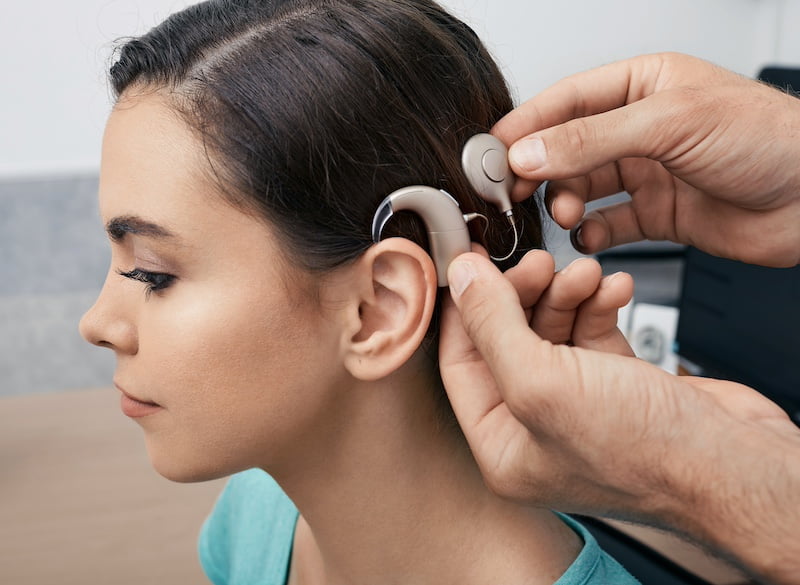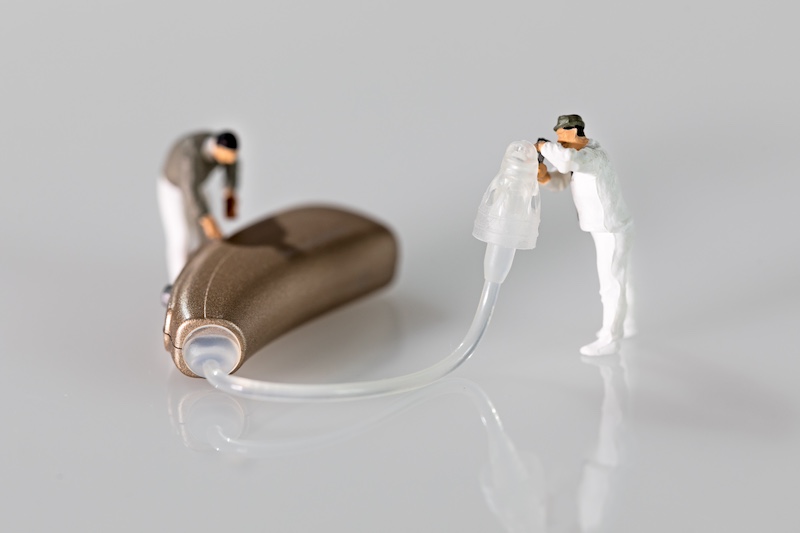Step to the beat of this smooth operation
If you’re a Hearing Instrument Specialist, you’re no stranger to the magic of transforming someone’s world through better hearing. But, like any fine-tuned performance, it requires a blend of expertise, precision, and a dash of technique. That’s why today we’ve gathered some strategies that will help you hit the right note and have your patients singing your praises for appointments to come.

So, grab your tuning forks, and let’s dive into what it takes to have a successful hearing aid fitting.
Tune in to your patient and tone out the rest
Starting off easy, get into character by picturing yourself as a maestro holding a conductor’s wand and listening actively. Take the time to understand your patient’s unique concerns, preferences, and goals. Everyone is different, and by dialling into their specific needs, you’ll already be on the path to a successful hearing aid fitting.
Choose the genre that suits your patient
Are they a fan of the classics, or do they prefer the latest hits? When selecting and suggesting certain hearing aids, be sure to consider factors like hearing loss type, lifestyle, and technology preferences. Factors like comfort, cosmetic preferences, and the patient’s dexterity for device manipulation will also influence the success of the fitting.
This patient-centred approach ensures that the chosen hearing aid is customized to provide the best possible hearing experience for each individual.
Get into the groove for the perfect feel and fit
Like the dynamic markings on sheet music, guide your patient through to the hearing aid fit that is right for them. Decide between using a dome or a custom earpiece based on comfort, occlusion, and hearing thresholds. The cap dome is the smallest and least noticeable in the ear, suitable for those with normal low-frequency hearing and mild to moderately severe high-frequency hearing loss. Vented domes and power domes are better for mild to severe hearing loss.
Further, cShells and SlimTips offer comfort, with SlimTips aiding retention and dexterity issues, while cShells are for severe to profound hearing loss. The choice of coupling affects sound in the ear, and it’s vital to find the right balance.
Conduct a soundcheck on the hearing aid feedback test
Like every song cover has a personal style, each manufacturer has unique procedures, and conducting a feedback test can be somewhat ambiguous. When it comes to target matching, performing both a feedback and a real ear test offers a valuable cross-check for acoustic coupling and provides data to boost confidence.
The most effective cross-check involves analyzing if the feedback curve aligns with the simulated gain curve, helping make informed decisions for the next steps.
Find out if the hearing aids measure up in 4/4 time
The consultation may be finished, but the performance is never truly over. We recommend scheduling follow-up appointments to fine-tune and ensure that your patient’s hearing aids are delivering their best. This meeting should be used to monitor and adjust the devices where needed, address adaptation and acclimatization challenges, assess patient satisfaction, detect potential technical problems, and reaffirm education on hearing aid care.
Above all, we know that ‘the hearing aid that is worn is always the best,’ so consider the follow-up appointment the encore that leaves the longest-lasting impression.
Rock and talk with us
Hearing aid fittings are not just a routine; they’re a symphony of art and science. Consider yourself the conductor, and your patients the audience that eagerly awaits your medical masterpiece. Let our tips put a jig into your usual song and dance. By following these strategies, you can fine-tune not only hearing aids but also the quality of life for those you treat.
At AHIP, we understand that your thirst for knowledge is the fuel that powers your professional journey. When you stay in step with us, we’ll help make every appointment a standing ovation so you can stay on stage and keep rocking the hearing instrument world!
AHIP is not and shall not be liable for any of the views expressed by the authors or advertisers on the Signal Blogs. The authors’ opinions and the advertisers’ content do not necessarily reflect AHIP’s views.



